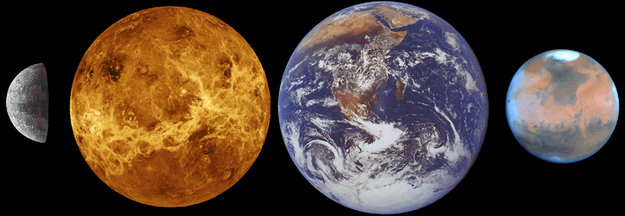Forming Terrestrial Planets from a Narrow Annulus
Lexi Detweiler, Seth Jacobson
.
| Abstract | Background | Methods | Results | About Me |

ABSTRACT
Context
Terrestrial planet formation simulations have consistently produced Mercury and Mars-like planets with too much mass. Although it has been shown by Hansen (2009) that terrestrial planet analogues can be much more accurately reproduced when all of the mass is initially confined to a narrow annulus or “truncated disk” from 0.7 to 1.0 AU, Hansen’s initial conditions must be called into question. Hansen began simulations with 400 embryos, spaced less than one mutual Hill radius apart: an incredibly dense initial condition.Aims
We aim to show if terrestrial planet analogues can be created from a narrow annulus by examining the stability of systems of embryos within a narrow annulus and investigating whether a truncated disk of embryos of this density could have been created through the process of pebble accretion.Methods
Several simulations were completed to investigate this using the planetary dynamics code Swift (Hal Levison and Martin Duncan, 1996). Simulations were run varying the number of embryos which the annulus initially contains, with the total mass remaining constant at two Earth masses. In addition, simulations were run with a constant 400 embryos, with the total mass of all embryos adjusted until a stable system was achieved.Results
Simulations with 400 embryos and two Earth masses were unstable. For gradually less dense systems, by decreasing the amount of embryos, it was found that a stable system did not occur until 4 embryos. A stable system did not occur until a separation distance of 4 mutual Hill radii. Although Hansen got good results by starting simulations with a truncated disk of material, this disk is far too dense to have been formed by any natural physical mechanism. Systems of 400 embryos do not grow in mass through pebble accretion, even with a pebble flux of 2000 Earth masses per Myrs. Therefore we can say that a disk of this density could not have been formed via pebble accretion.
. Alexandra (Lexi) Detweiler
. Northwestern REU Student 2018
. Illinois Institute of Technology